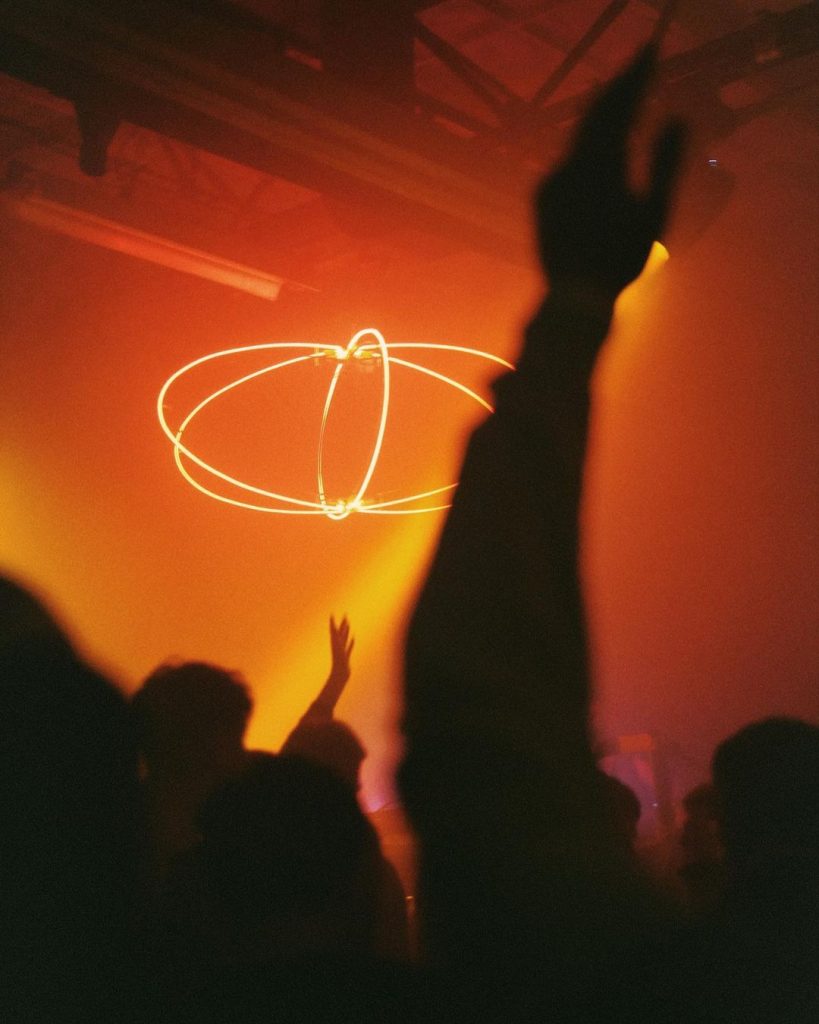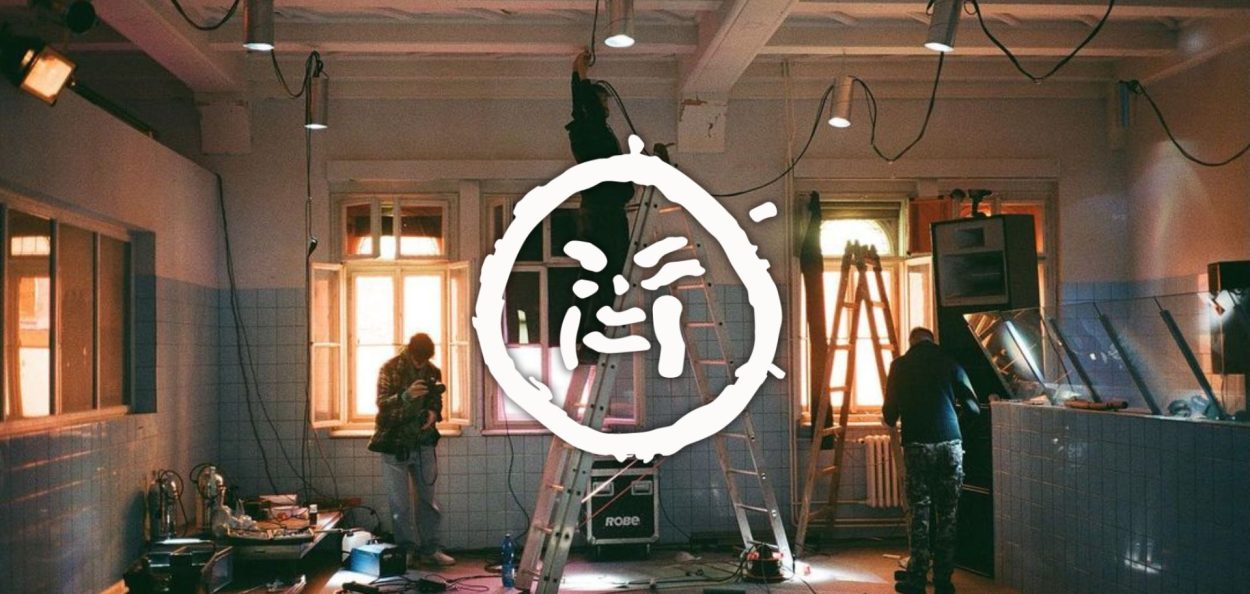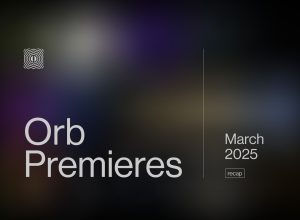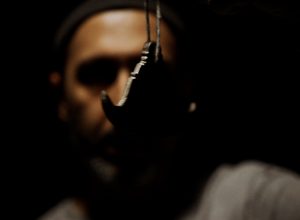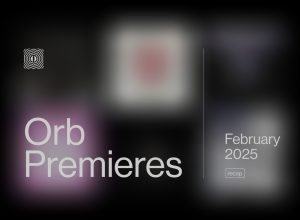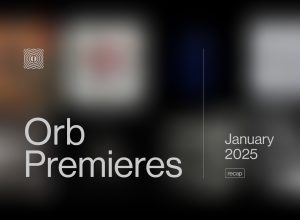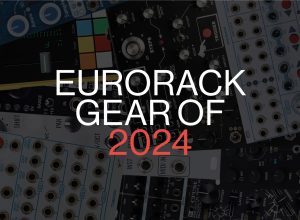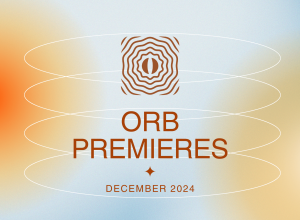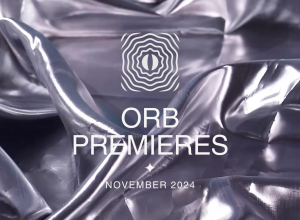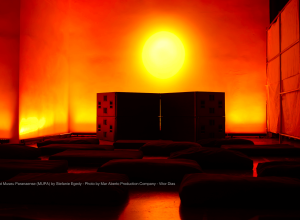Seamlessly woven between the vibrant beats of Prague and the pulsating heart of Berlin, Harmony Rec. has been a driving force, meticulously crafting site-specific, audiovisual events and consistently releasing high-quality records since 2014. Passionately orchestrating nights across many dancefloors, Harmony Rec. isn’t just a promoter or a label; it’s a community of like-minded individuals who collectively share the same creative spirit.
In this exclusive Behind The Decks series, you’ll have the chance to explore the world of Harmony Rec. alongside their talented DJs behind the decks—Biri, Shoal, and Alfred Czital. They’ll take you through their experiences, intentions, and lifes as producers and selectors.
Joining the conversation are Tomas, the co-founder behind Harmony events, and Raleigh, one of the leading minds behind the record label. From the lively streets of Prague to the eclectic scenes of Berlin, discover the essence of Harmony Rec.—where music transcends boundaries, and the creative spirit finds its true home.
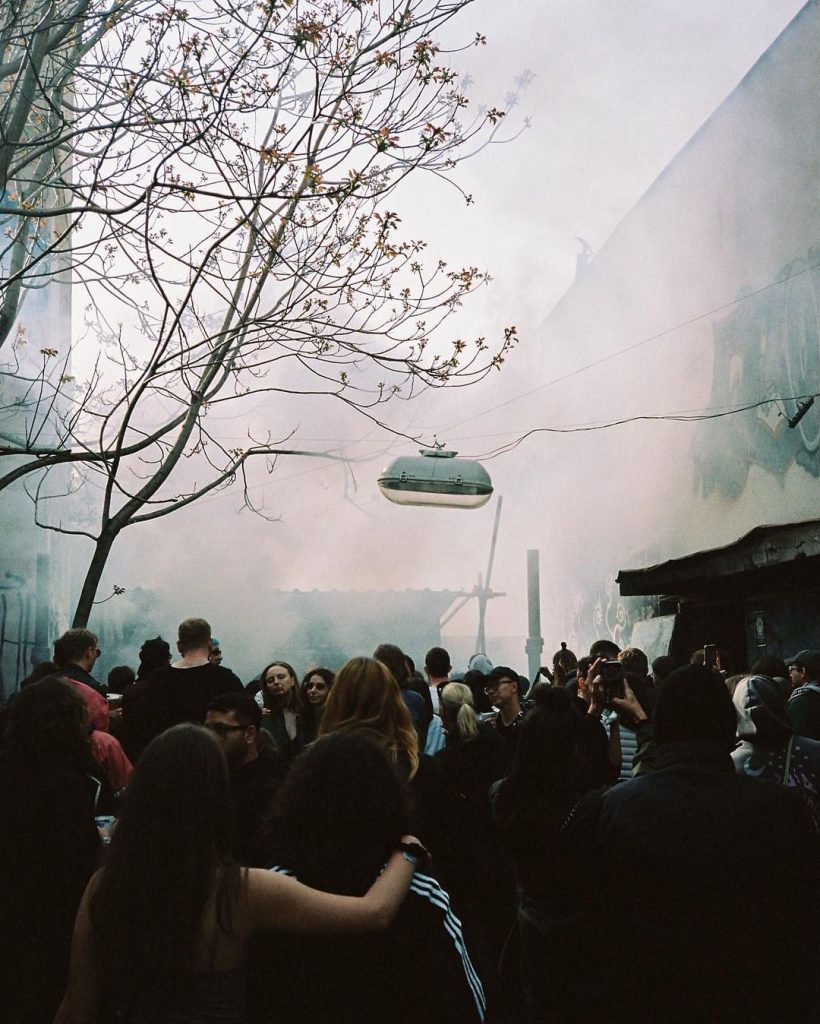
Can you each share your journey into DJing?
Alfred Czital: I was hanging out with DJs from a very early age. Therefore, I eventually developed an addiction for digging music, so becoming a DJ myself was naturally the next step. I’m incredibly grateful for the chance that was given to me, but it took me a long time to get into the right mindset and to start respecting the grooves and harmonies—ultimately finding my own style and vision.
It was a long journey. I think that Dash, my girlfriend at the time, really helped me to improve my technique, because she was already a very experienced vinyl DJ. It’s always been sort of a healthy competition that really made me grow as a DJ, which eventually made me become a producer, as I figured that I will never be as good as her, so I wanted to find my own thing.
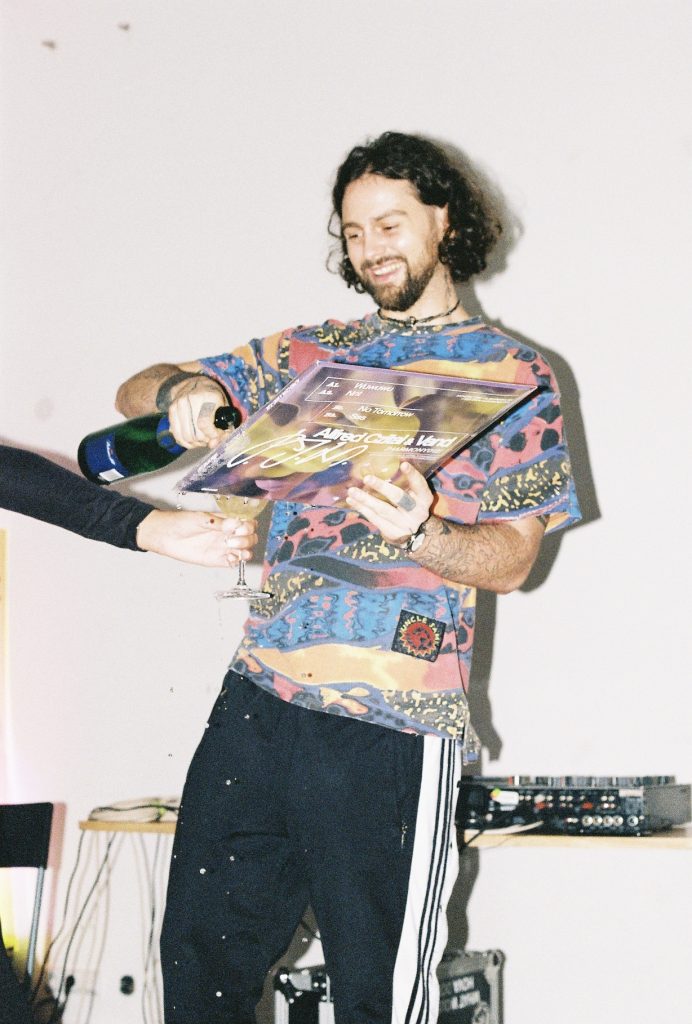
Biri: My love of DJing began around 2005 when I was 15 years old, and my big brother was a DJ. I would sneak into his room when he was away and play with his vinyl collection, trying to get the right pitch. I fell in love with it immediately and soon started digging for music and playing at local bars in Jerusalem at the age of 16.
Shoal: My interest in electronic music started through listening to the music that was promoted by a radio show called Dance Department. When I was younger, we would always listen to this whilst driving back home at night from family visits. My curiosity grew bigger and more diverse after discovering Discogs and the mnml ssgs blog.
When I was 16, I was able to scramble together a little set-up with CD players, combined with old speakers from my dad. Consequently, I saved up to buy a pair of second-hand CDJ350s. This allowed me to play at small gatherings and birthday parties. I played anything that I could get my hands on, as long as everyone was having a good time.
For me, it was more about practicing and making sure a mix was done correctly. When I got more comfortable behind the decks, I started to approach clubs and collectives around my area that promoted house and techno events.
How would you describe your individual DJing styles and the elements you bring to your performances?
Alfred Czital: I’m aiming to create maximum immersion by respecting the dynamics of each track. I don’t use loops much because then it tends to lose energy. Even though my DJ sets are mostly bass-driven and focused on groove, mixing in the right key is always a really important element, as in my opinion, there’s nothing worse than two totally different-sounding tracks playing together, even if they are best matched perfectly.
I really like to play long sets as it usually takes me around 60 to 90 minutes to really get into this autopilot mode, a state of trance when I’m fully locked into the groove and everything just goes naturally. I don’t have to really think about what I am doing anymore… I love this feeling, then I can go for hours.
Biri: My DJing style is more of a storytelling process, I try to combine rhythmic drums with deeper and trippy sounds, usually I would consider myself as someone who loves slow developments in the mix and slow mixing. However, it all depends on the vibe and mood in the room.
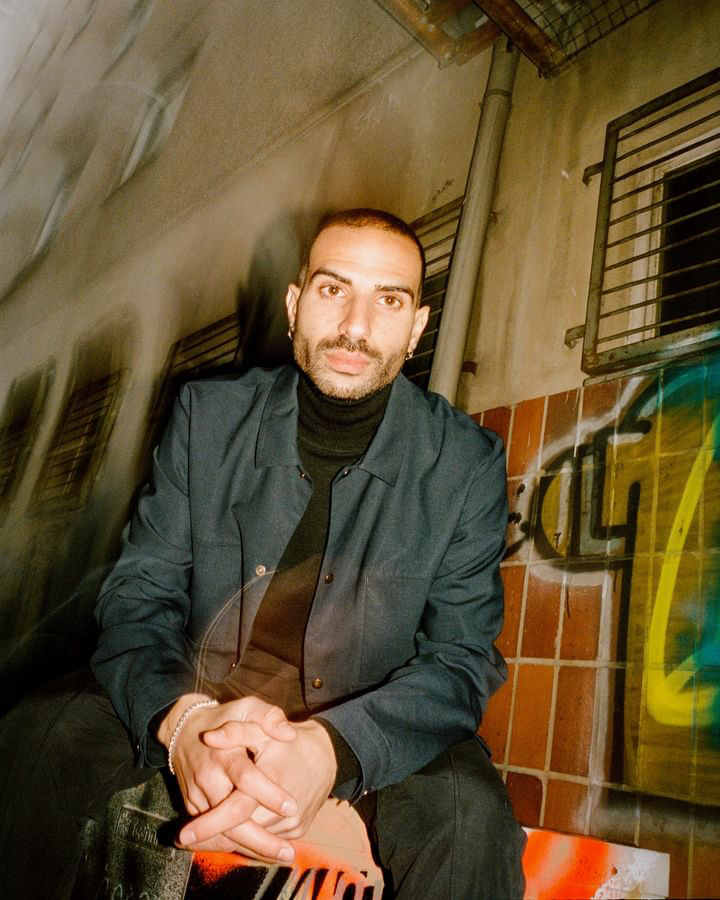
Shoal: I like to say that my style at the moment consists of deep and spacious sounds, driven by energetic yet minimal grooves, both for the body and mind. But, at the same time, musical interest and taste progress and evolve. Therefore I like to stay curious about where new musical combinations might lead.
How have your musical tastes and influences evolved throughout your DJing career, and how do they manifest in your sets today?
Alfred Czital: Big time! Back in the day, I was obsessed with deep sounds and ambient textures. It was the sound of my first ever released records. But eventually, I needed more drive and dirt to keep the crowd moving even during the late hours. I was really influenced by the late, but legendary, Prague venue, Wildt. It was a mostly house-oriented venue, and it brought a lot of MPC swing into my music.
After becoming a regular there, I started digging a lot of old tech-house and trance, mostly from the early 2000s. I’d say I’m still trying to preserve the deep and hypnotic sound, just with way more energetic and fun/weird elements.
It may sound cliché, but moving to Berlin ultimately shaped my sound into the form where it is now. Before I didn’t really go to other parties besides the ones that I’ve played at or organized, and I rarely played outside of Prague, so I’d say I was pretty biased.
Clubbing in Berlin helped me to understand what should be played at certain times during the party in order to keep the energy levels very high without going too cheesy or too hard—just sexy. Nevertheless, DJ Yan was always the biggest inspiration and influence for me, he showed me the real grooves that are tearing clubs apart.
Biri: I was exposed to a wide range of music genres while living in Berlin and London. This made my DJ sets more diverse than they were in my early years. I used to focus mainly on Detroit techno, but now I am open to many more genres and influences, incorporating them into my productions.
Shoal: In the beginning, I discovered music mostly through radio and podcast shows. This changed when I discovered the mnml ssgs blog and Discogs. It opened the doors to many different types of music. What grabbed me the most was the deeper spectrum of electronic music, ambient, and electro-acoustic music.
Ambient gave me a little break from dance music and allowed for more deep listening. Deep listening made me more aware of listening with more detail and patience. By doing so, it made me aware of all the sonic textures, layers, and gestures that are present in music. It also taught me the power of narrative. The power that music can lead you on a journey. This is something that I was not aware of or thinking about when I started. Consequently, I started to exercise by layering different music in mixing ambient. Fusing different sonic textures and layers, and taking the listener on a journey has been in my sets ever since.
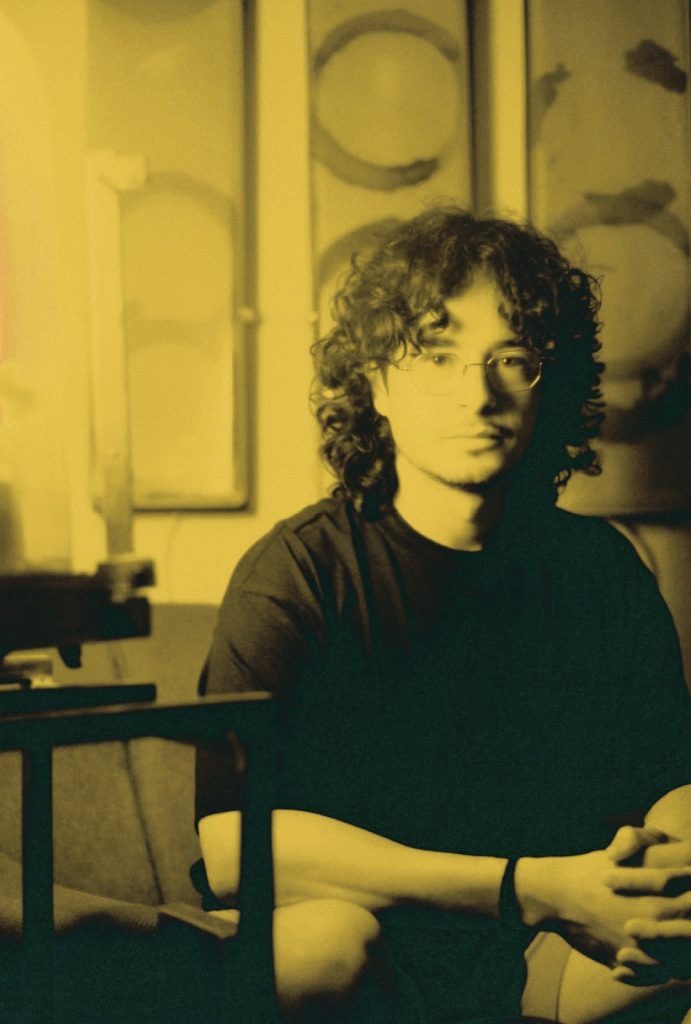
What are some memorable moments or experiences behind the decks that have had a significant impact on you?
Alfred Czital: The first thing that comes to my mind is the Monument Festival this summer. I was closing the first night b2b with Yan and it was pure bliss. I’m not sure if anyone was ready for what was about to happen, but it turned out really well and the crowd was going crazy.
Playing with Yan is always special, we did it so many times in the past. We are keeping it for only really special occasions, and this was definitely one for the books!
Besides that, there was a closing I did at one of the Harmony parties in Prague earlier this year. It was at Bike Jesus, and it’s not the biggest room, but there’s always an insane energy when it’s packed. I had a chance to take everyone on a proper 7-hour-long journey and fully express myself—truly a legendary moment.
Biri: It is always the deep and emotional moments that I love most. They usually happen after the peak-time moments, when you can see and feel the crowd closing their eyes and smiling. You can sense that they are, on a deeper level, connecting with the music. A recent moment was the closing track I played at the EMBODIMENT party at RADION Amsterdam.
Shoal: Every experience is unique in its own way. And in every experience, there is always something to be found from which you’ve learned or had an impact on you. But if I had to pick two memories dear to me, one would definitely be the live set I played at Under The Desert Stars in Morocco. It was a gathering where it all felt like a whole, pure magic. A unique combination of the environment, atmosphere, people, music, and energy that everyone brought to that place.
The other memory would be the Harmony event in Klementinum. The crew made it possible to host a day-time event in the courtyard of the National Library of the Czech Republic. I’m still amazed at how the crew made it work to host an event in such a historical place. The crew allowed me to play my first dance-floor-oriented live set at this event. For this, I’m ever grateful!
How do you prepare for a DJ set? Are there specific rituals or routines you follow?
Alfred Czital: It has a lot to do with stress, but that (in my case) can be avoided by preparing my playlist/records well, which I always do. Sometimes I start even weeks in advance. I like to do my research, and I’m always aiming to be ready for every possible scenario, so I can relax and pick a plan B when the party takes an unexpected turn before I’m about to take over.
Biri: Before every gig, I prepare the music for the specific occasion, depending on the venue, playtime, and other factors. I organize the playlist by the mood or vibe of each track. It is very important to me to build up the set the way I want to present it.
Shoal: I select my tracks based on the time slot, the venue, and the party. But usually, the rabbit hole starts with going through my music wish lists. When I find a track I want to play, I search for music that I think fits that particular track, and so on.
Usually, I fill a playlist with roughly 90 tracks, depending on how long a set is. This allows me to have plenty of room to play around and react to what the crowd feeds back to me. But simultaneously always being aware that in reality, it is always different compared to how you might think it will turn out.
What are some of your favorite tracks or artists that have consistently found their way into your sets?
Alfred Czital: It’s more about the vibe rather than any specific tracks or artists. I rarely play the same tracks over, as I get easily tired of hearing the same stuff again. So I don’t think I have any favorite tracks. As mentioned, I’m mostly inspired by my close friends and other artists from my collective.
When I’m on the hunt for quality trance, I always check out what is going on with our proggy queen Zeynep, she’s an endless inspiration when it comes to high-energy music. The same applies to Linni (Polygonia) when I’m looking for something more techno and tribal oriented.
Biri: These are some artists that have blown me away with their music recently:
Laurel Halo – Atlas
VC-118A – Heat
Yogg – Nico’s Bass
Tammo Hesselink – Eraser
Mathys Lenne – Katua
Fergus Sweetland – Thank You, Brain
Carrier – Neither Curve Nor Edge
Benabou – Problème De Ressources
Shoal – Gerakan
Om Unit – Process
Rommek – Scoria
Decoder & Jay York – Mynus
Vegim, Nuno Zanga – Cold in the Bones
Nørbak – Norma (Temudo Remix V2)
Pugilist – Flip Trix
Ruben Ganev – Scattered
Shoal: This is a difficult question, favorites are ever-changing. But I would say at the moment, I’m digging the music that Erik Luebs is putting out. Amazing sound design and drive that pierces through every mix. A very refreshing sound!
Harmony Rec. is known for curating site-specific, audiovisual events. Can you share some insights into the concept and inspiration behind these events?
Tomas: Last October marked the ninth year of existence of the Harmony party series. Throughout that time, we have been able to experience what has worked for us and what has not. There’s a set of steps that we tend to follow to make the process as smooth as possible. Harmony is a passion project. All crew members have a job on the side, we strive to maintain balance with our personal lives and work.
The organizational process for DIY events mostly begins with seeking possible spaces and locations. The crew works with Alexander, who often helps scout spaces for us. Some locations have been on our list for ages and thanks to gentrification or economic changes, they lose their purpose and become abandoned. At that point, we open a discussion with owners about the possibility of organizing a site-specific event and the date. In the past, choosing the date came first, and after, the crew tried to find a fitting off-beat location. This approach made it extremely stressful from time to time, as we often had booked artists and no venue even a week before the party. In Prague, the chance of hosting parties in those DIY spaces is less possible every year with the city’s development and stricter regulations. Therefore, securing the venue has priority before setting the date and bookings.
Once we have a contract with the owner (we never aim to do this illegally). We build a concept and lineup around the vibe of the venue. Most of the time, this comes already during the part when we scout locations that we imagine who could be an ideal booking for that specific party. The rest is on our team of visual and light designers. We have been working with Jan Slanina for some time now, and he’s the one who makes the main stages at Harmony parties so memorable. In the last year, we also started to collaborate more with our bestie Ella Pavel, who always adds a warm and cozy touch to areas she works on. At our very last event, the entire team of Harmony was involved in setting up the venue for the attendees, and it was probably the best vibe we have had.
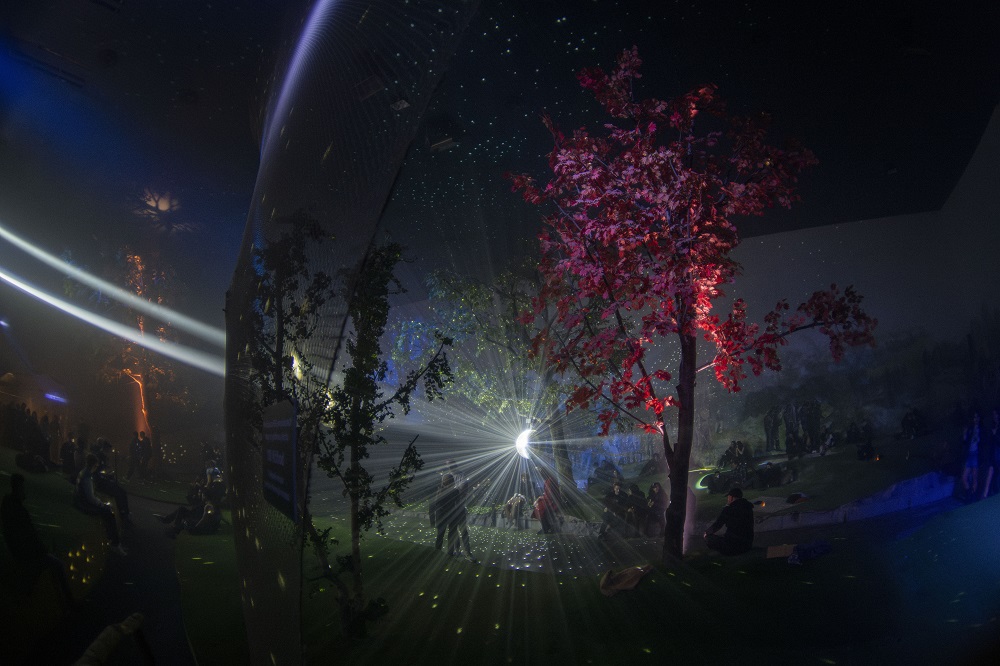
Prague and Berlin are both vibrant music scenes. How do the two cities influence your music and the events you organize?
Tomas: Berlin, compared to Prague, is a large metropolitan and competitive city. Prague has taught us how to treat your local scene as a family and how to try solving problems together. Since the scene is considerably smaller than in other large European cities, promoters must learn how to communicate together, as hosting 3-4 big events on one night doesn’t work for anyone. Except for one person, everybody treats each other with respect. We are so proud of the scene in the Czech Republic in general and how people involved cooperate together.
On the contrary, Berlin has shown us a lot about how you can work and create a safe space. The importance of harm reduction and looking after your attendees from the point they enter the party. Organizing events there also taught us what means of doing things internationally and what aspects need to be considered.
Can you highlight some of the most memorable parties or events you’ve hosted in Prague?
Tomas: Each party is, to some extent, memorable (laughs). There has been a list of legendary parties we threw with a friendly collective nite vibes starting with an abandoned water reservoir, where we did 4 open-air parties, a former winery with a massive underground space, or a completely illegal forest rave last summer, where we got hit by the thunderstorm and couldn’t drive the equipment out for days, as the soil was extremely muddy.
As Shoal mentioned, we hosted an open-air party in the courtyard of the UNESCO-listed national library in the city center of Prague. The complex was built in the 16th century, and it is the second-biggest historical venue in the Czech Republic, after the Prague Castle. This didn’t go unnoticed by the far-right and nationalist parties that still consider this genre as music for outcasts. We faced huge PR pressure from their side to cancel the party, even the Ministry of Culture held a press conference to explain why there is a techno party being organized on sight of this historical heritage. In the end, all went smoothly and there was no disruption caused by the far-right people.
Another favorite was definitely the fifth-anniversary party of Harmony at Discoland Sylvie. The venue was something like the first strip bar and nightclub in the independent Czech Republic, “a place to go” if you were a celebrity or mafia in the ’90s. The owner was a crazy guy and kept a bear as his pet. We turned the place upside down. A smoking room was in the former bear cage, and a second stage was in the basement kitchen. It was the only party that ever happened there since the official closing in the ’90s.
The last anniversary party in October was organized in the abandoned sports center. A place where some of us played squash and minigolf as kids. We tore down the wall in the Squash and connected two courts together to turn it into a proper main stage area. The chill-out zone was a former mini-golf court with synthetic grass and a giant disco ball reflecting light across the whole room. It was stunning! And of the proudest moment, seeing what we put together as a team. Sometimes we wish those spaces could be used more than one time only.
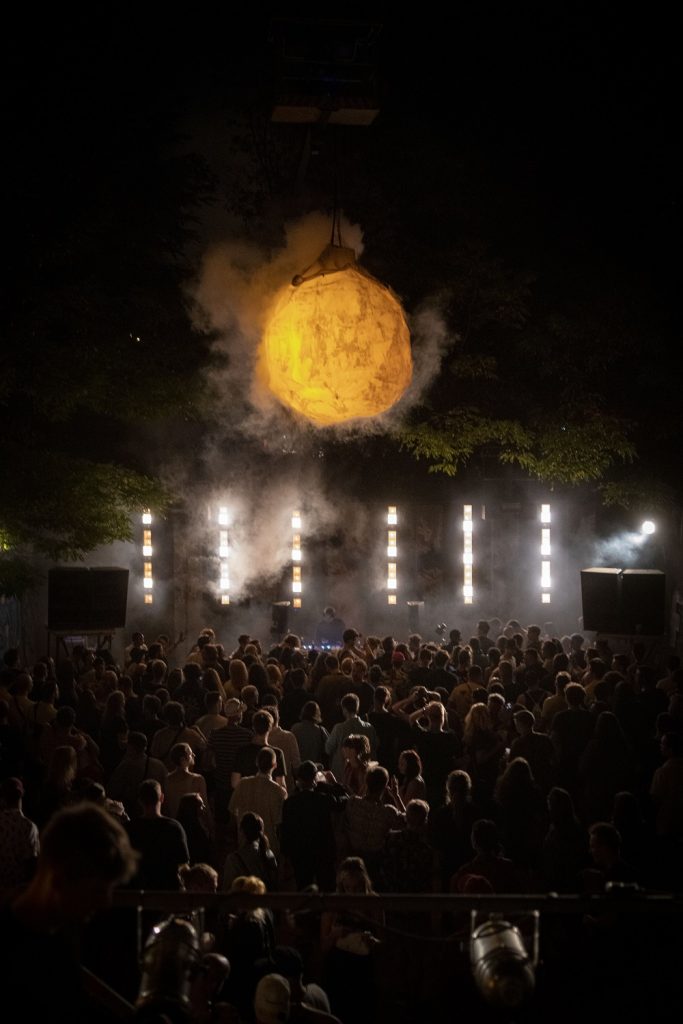
How do you approach creating an immersive experience for your audience beyond just the music? Are there any unique production elements you incorporate?
Tomas: From our experience, the visitors to parties in Prague highlight the visual part like the music. The friends behind the first new wave of those DIY events in Prague (around 2013) always had a light designer in the team and therefore created this blueprint for parties in Prague, which emphasizes the atmosphere to a bigger extent than it is done in cities like Berlin.
Often, you hear your friends trying to remember past events by describing the installation at the party. Harmony has a team of talented designers who have been working together, and they aim to make the experience as memorable as possible. With the main designer, Jan Slanina, we have been looking into incorporating new technologies and media in the production. In the summer, we used holofans for the first time, for example.
How do you see the role of music in creating a sense of community at your events?
Tomas: Although music is obviously a key element of the label and events, in Prague, especially, we have always been seen as a collective, and people are aware of the name, and they trust it. We’ve seen that trust reflected in the success of our secret lineup events.
The party series was literally born from a group of friends who were going out together. So, the first Harmony party hosted in 2014 was a private event for friends only. It didn’t take long, and more friends from the same circle began joining the parties and bringing their friends too. Three years later, we hit the first party (4th bday of the collective) with over one thousand attendees at the former cargo train station at Prague’s Žižkov. From that moment on, the crew knew that this was something serious.
Nine years later, the same friends still go to our parties. Some of them are not as often anymore as they have different responsibilities, but it is awesome to see familiar faces at every event, as it brings a family vibe. We also have a lot of newcomers and young people who started going out only after the pandemic. Besides warehouse events, we also engage with our community by hosting small gatherings, like the release parties, where people can hang out and get to know each other in a more laid-back setting. Those who want can even contribute to the parties. We encourage people to come to the spaces before the actual events and help us with the build-up, so they can see what is happening behind the scenes.
Harmony Rec. is described as a community of like-minded individuals. How does this collective spirit influence the way you run your record label?
Raleigh: I guess that the main aspect of our collective spirit is the trust that has developed amongst the members over time. There are many of us, so in case you need a consensus for every single decision, it would be very hard to push the label forward. There is no boss that has the final word, different aspects have different importance to different members.
Of course, each of us has an opinion, but if anyone disagrees, they wouldn’t build obstacles. It is the shared trust that helps us to decide faster and move on to other projects. From our experience, this more or less subconscious method has never failed and is characteristic enough to form a mood that our followers can grasp. Last, but not least, it prevents the tension within the collective. I have heard a lot of amazing music that will never be released because of internal fights, which I often find unnecessary.
What is the vision and ethos behind Harmony Rec.? How do you see the label evolving in the coming years?
Raleigh: We have been through an evolution from a deep techno label to a more genre-open imprint that respects dancefloor-infused uplifting sounds. The emphasis is on sticking to vinyl and releasing innovative, yet timeless music. In the upcoming months, we have a few EPs experimenting with collaborations between two artists. You can look forward to a record by Alfred Czital & Ayu and Polygonia & Shoal.
How the sound of the label will evolve, depends on the people we will meet and the events we will attend. Lately, we have been traveling quite a bit, which is also an eye-opening factor. It’s all about finding the willingness to look outside your bubble and accept that there is also other stuff going on. We have so much fun when we incorporate new features into our sound or parties. This is the main reason we are still keeping Harmony Rec. alive with smiles on our faces.
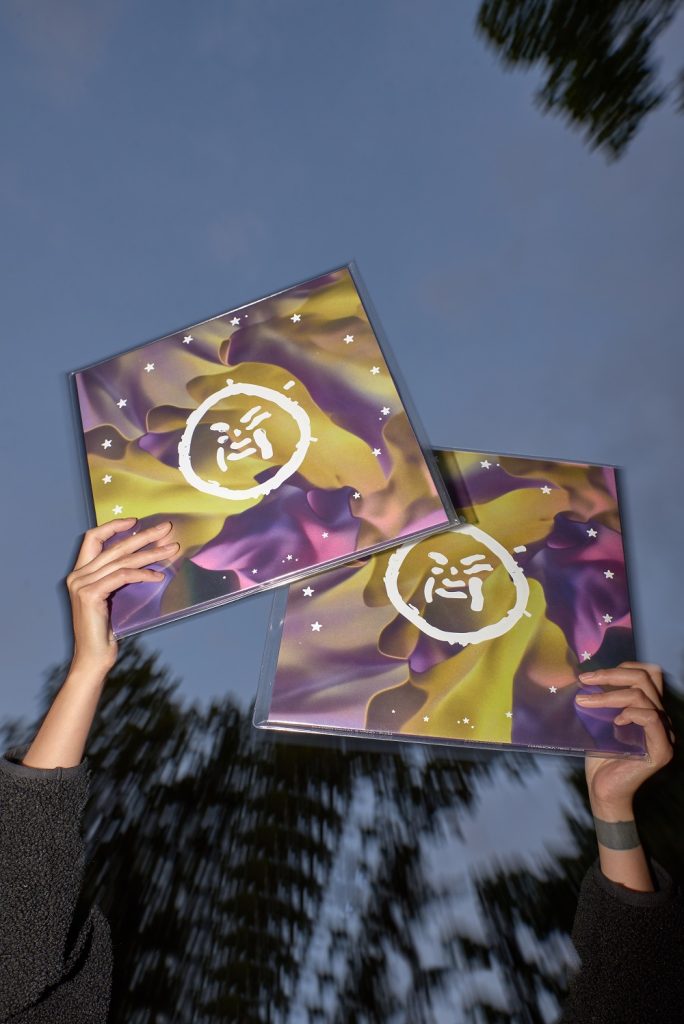
Can you share some insights into the collaborative process between artists on Harmony Rec., and how it contributes to the label’s distinct sound?
Raleigh: We are continuously asking our friends around about their productions. If there wasn’t this push from our side, there would be just a fraction of the releases in our catalog. From the beginning, we are talking about everything, describing which direction we see the label going and trying to get the best out of every release. All the people releasing on Harmony Rec. are tied to the crew with solid friendships, so we don’t have to be worried about giving honest feedback on the material they are sending over. I think that in the end, this procedure is appreciated by both sides.
The last collaborative record on the label comes from Alfred Czital & Vand. Can you tell us more about it and how it came together?
Alfred Czital: It all started as an innocent session in a coffee shop. We both took our computers and agreed that we make a track in a key of Dm and 80 BPM. After a while, we compared what we had and decided to go to the studio where we took the best parts of both tracks. That’s basically how “Wuwuwu” happened. From that moment onwards, we couldn’t stop. It was the biggest flow of my life. We basically produced the whole record in 5 days, including mixdown.
Lastly, what are some of the plans for the future individually and as a collective?
Raleigh: We have a few exciting collaborations coming up in 2024, a tour in Australia in February with stops in Melbourne, Sydney, and Byron Bay. Later this year, we plan something bigger in Prague with Minimal Collective and a few Harmony invites with our favorite collectives and labels. On the label side, we have just sent to production another compilation, and other hints were mentioned earlier in this interview. Stay tuned!
